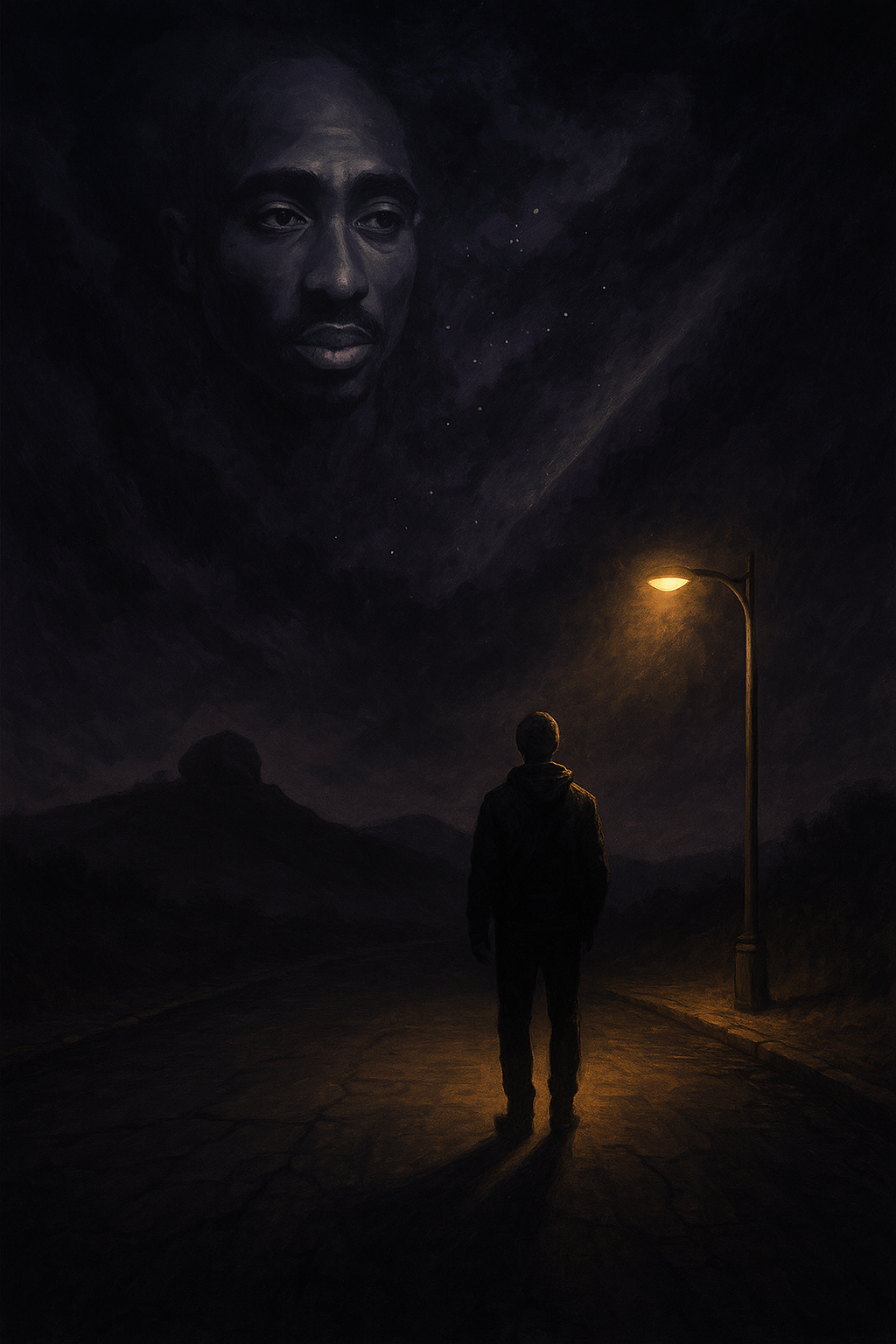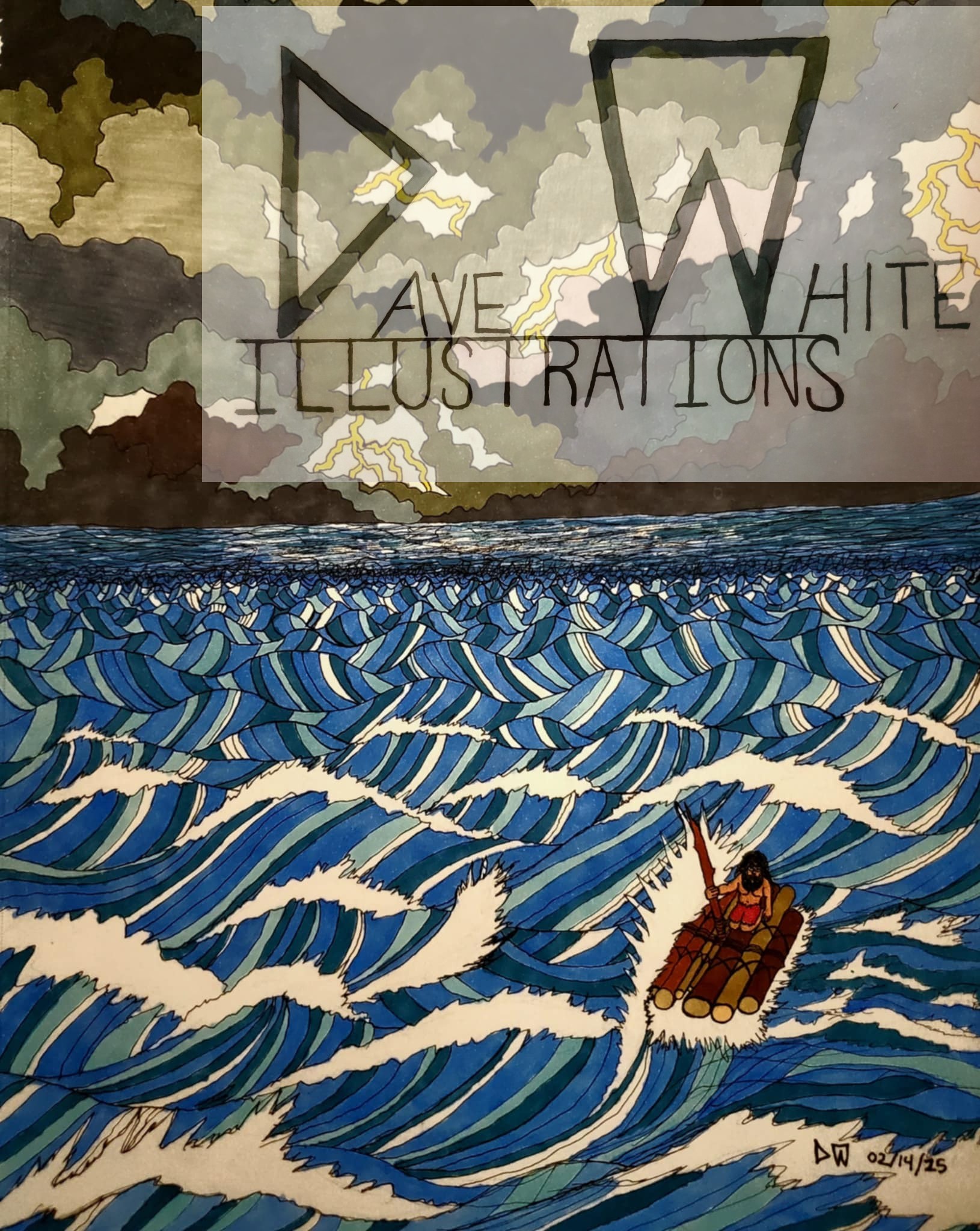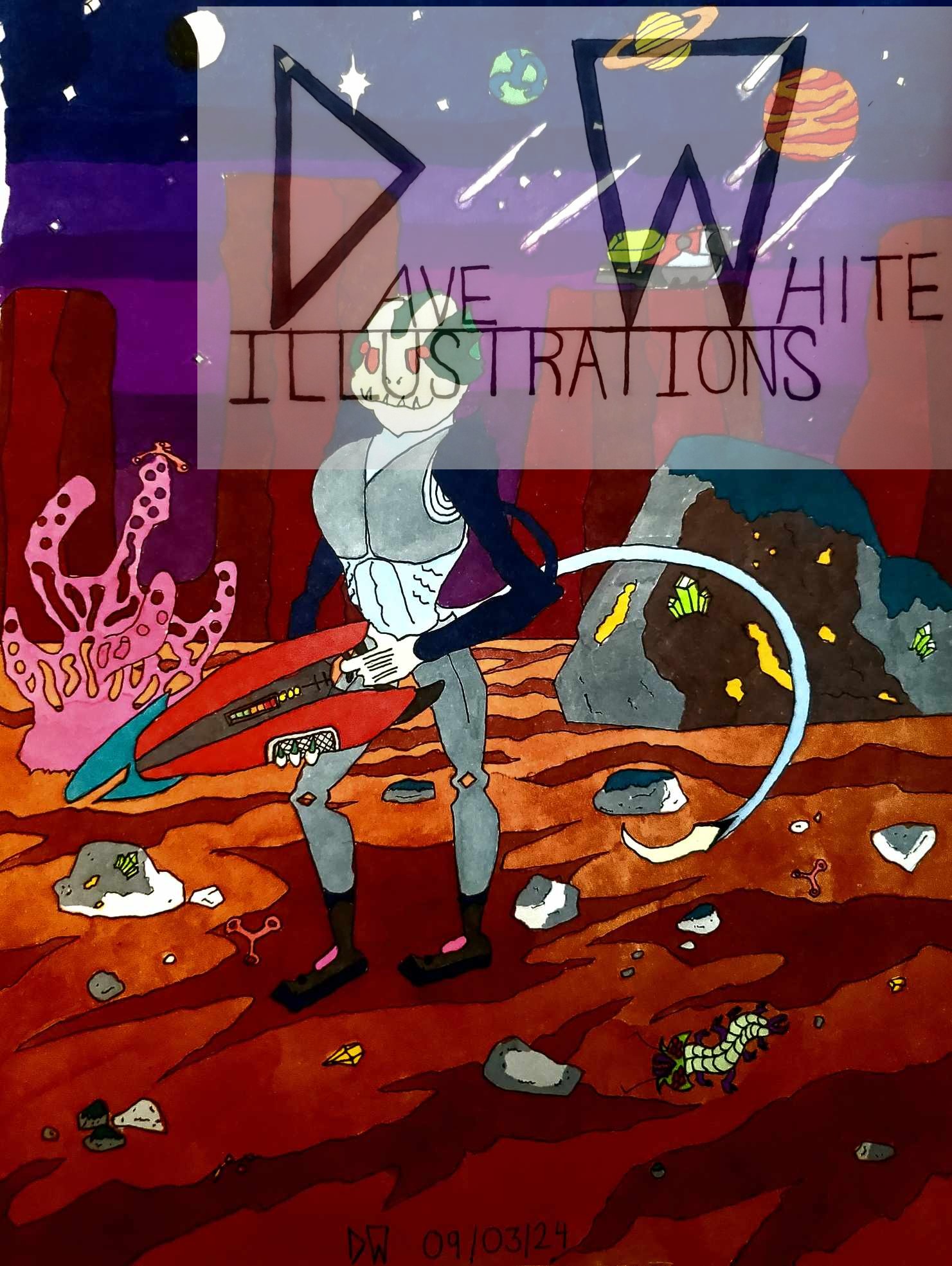“Why am I fighting to live, if I’m just living to die?”
Tupac Shakur’s words linger like a haunting refrain. More than a lyric, it is a mirror to existence itself. If you’ve ever carried grief, depression, or trauma, you’ve likely felt the sting of that question. It’s the paradox at the core of human life: we fight for breath knowing one day it will stop.
Tupac wasn’t speaking only for himself—he was speaking for everyone who has wrestled with despair. His voice belongs in the same lineage as philosophers and poets who refused to ignore life’s contradictions.
🕯️ Tupac Meets Camus
Albert Camus, in The Myth of Sisyphus (1942), compared life to a man endlessly pushing a boulder up a mountain, only for it to roll back down. The absurdity of existence is undeniable, Camus said. And yet, we must imagine Sisyphus happy—because the act of pushing itself becomes meaning.
Tupac’s question resonates in the same way. He voiced the tension between futility and resistance. His survival, his music, his defiance—all were acts of pushing against the weight of silence.
🌑 The Mental Health Mirror
For those living with depression, bipolar disorder, or trauma, Tupac’s lyric is not abstract—it’s personal. “Why am I trying to give, when no one gives me a try?” captures the loneliness of invisibility, the exhaustion of trying to belong.
Mental health advocacy reminds us that voicing despair is itself survival. Silence isolates. Words connect. Tupac turned his pain into lyrics; others find it in therapy, poetry, or community. Each expression is proof of life, of endurance.
As Viktor Frankl wrote in Man’s Search for Meaning (1946): “Those who have a ‘why’ to live, can bear with almost any ‘how.’” Our reasons may be fragile, fleeting, or small—but they are enough to keep us going.
🎶 Music as Resistance
Tupac stands alongside Billie Holiday’s Strange Fruit, Bob Dylan’s Blowin’ in the Wind, and Kendrick Lamar’s Alright. Each piece is both lament and resistance. Each transforms despair into survival notes for a generation.
Tupac’s defiance was never clean or easy. He did not romanticize the pain. He named it. And in naming it, he gave others permission to breathe through their own shadows.
🌌 Sparks of Survival
Answers to life’s paradox don’t come in sweeping revelations—they come in sparks:
- The sound of laughter breaking through a heavy night.
- Rainfall against cracked pavement, reminding us of renewal.
- A fleeting sunrise that feels like a promise.
- Art that gives shape to your silent battles.
These small reasons matter. They are not cures, but interruptions—cracks where light gets in.
🖤 Poetic Bipolar Mind: Carving Light from Shadows
This paradox is also the heart of Poetic Bipolar Mind. I write not because I’ve solved existence, but because silence feels heavier than words. My reflections, my poems, David’s illustrations—together they are not neat answers but acts of survival.
When my daughter Khaleesi passed away, silence nearly consumed me. Her absence, like C.S. Lewis described, was “spread over everything.” Yet even then, I wrote. Not to erase grief, but to name it. Naming pain turns it into connection; connection turns it into art.
David’s illustrations echo that same defiance. His art does not decorate—it translates. Together we call it Emotive Fusion Art: where grief and creativity intertwine, where despair can be painted, where resilience takes shape in line and color.
PBM exists to hold the paradox without shame. To say: you are not alone in asking the unanswerable. To say: surviving the question is already a victory.
🌒 Living in the Question
Perhaps Tupac’s lyric was never meant to be answered. Living to die, dying to live is not a flaw of existence—it is its essence. We know death is certain, but still we love, still we create, still we ask.
Camus wrote: “Man is the only creature who refuses to be what he is.” Tupac sang the same refusal in a different tongue. And we, when we keep pushing our own boulders, are proof that the paradox is not defeat—it is resilience.
So why fight to live? Because asking the question means we are still alive to ask it. And maybe that is enough.
📚 Works Cited
- Camus, Albert. The Myth of Sisyphus. Vintage International, 1991. (Original work published 1942).
- Dylan, Bob. Blowin’ in the Wind. Columbia Records, 1962.
- Frankl, Viktor E. Man’s Search for Meaning. Beacon Press, 2006. (Original work published 1946).
- Holiday, Billie. Strange Fruit. Commodore Records, 1939.
- Lamar, Kendrick. Alright. Top Dawg Entertainment, 2015.
- Lewis, C.S. A Grief Observed. Faber and Faber, 1961.
- Shakur, Tupac. Runnin’ (Dying to Live). Album: Tupac: Resurrection, Amaru Entertainment, 2003.





Leave a Reply